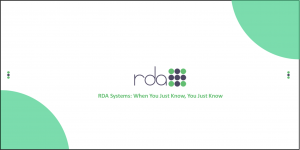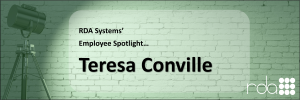With the evolution of technology, treasury management has become easier than ever. However, with so many solutions saturating the market, it can feel daunting to choose and implement new technology. Organizations that don’t evolve with their growing needs can potentially miss out on valuable analytics tools.
What are the Signs of an Outdated Accounting System?
One of the problems organizations can encounter is being ignorant of the fact that their accounting system is outdated. A surprising number of agencies still use pen and paper to calculate their finances. The obvious challenges are that the bookkeeping system using this method is time-consuming and relies too much on manual labor which can produce many errors. Besides that, data management and synchronization become a huge undertaking that is done inefficiently.
A common challenge many organizations face is cash forecasting. The lack of end-to-end automation and data accessed from fragmented systems cause department leaders to have difficulty knowing the cash forecast for the future. Liquid assets are vital for day-to-day operations and even well-established organizations can find themselves without working capital if they have cash flow inefficiencies.
Other signs that it’s time to modernize? Too much switching between standalone apps, limited automation within the tools, out-of-date vulnerable software, and no ability to connect to the cloud.
The Solution is Treasury Digitization
Treasury digitization implementation varies depending on the agency and its needs. For some, automating specific tasks may be enough while others might seek a full spectrum solution. It’s worth noting that as technology continues to develop at such a rapid pace, full digitalization (complete with integrated banking, advanced analytics, human resources, and accounting components) might be inevitable.
According to research, the top three areas that will undergo digitization in the next 1-3 years are cash management systems, cash forecasting and planning, and settlement and accounting.
What are the Benefits of Digitization?
Reduced human error — Even the most detail-oriented employee is bound to make mistakes. Digital automation of data entry eliminates manual input and, in turn, minimizes errors.
Accurate forecasting — A treasurer has the challenge of assessing future risks and weighing them up against capital uses. Having accurate, live data enables treasurers to make decisions without sifting through numerous spreadsheets.
Minimized losses — Traditional methods of treasury management make it difficult to detect anomalies within incoming and outgoing financial data. Having automated reports allows treasurers to catch missed opportunities and minimize losses.
Simplified Financial Data — The treasury department isn’t the only part of an organization that needs access to financial data. A program with a centralized dashboard presents data in an easily understood format and gives leaders across other departments access to the treasury department’s insights.
What Kind of Software Solutions are Available for Companies Ready for the Next Step?
ERP (Enterprise Resource Planning) systems allow organizations to manage accounting, procurement, project management, risk management and compliance, and more in one place. They often include software that helps to plan, budget, predict, and report on an agency’s finances.
ERP uses a common database that connects every aspect of an organization. This full-spectrum system eliminates the need for switching between standalone apps and spending time comparing data across different departments.
ERP, APIs, and RPA — What’s the Difference?
API might be a familiar term but how does it relate to ERP? An API (application programming interface) is a software intermediary that allows different applications to interact with each other without compromising security. Within an ERP system, APIs allow different modules to share information with each other.
Another popular buzzword in the digitization world is RPA. RPA (Robotic Process Automation) is an area of rapid development which uses AI software to complete repetitive human actions. Without the limitations of a typical employee suffering from screen fatigue, a robot can process data continuously and without errors, eliminating the need for a human to do repetitive manual tasks.
Incorporating ERP is not Without its Challenges
It’s worth noting that not every ERP software is a good fit for every organization and each agency must analyze its needs before making any decisions. The first and obvious step is to look at areas such as financial reporting, data and analytics, automation, accessibility, and user experience to identify gaps and needs. Then, researching ERP providers and looking at the support they offer with implementation, customization, and training will provide a clearer idea of the feasibility of onboarding the new software. Without proper research, the process may become more complicated, and staff may push back against using new technology. It will also help agencies to look at the ERP software implemented by peers and get a first-hand understanding of their experience with the solution and the service provider.
Technology is Moving Fast, is Your Organization Keeping Up?
Despite the uncertainty of the future, organizations simply cannot afford to ignore the advancing technology available to them. Between automation and centralization, digitizing your organization’s treasury is the natural next step when looking to the future.
RDA provides not only award-winning consulting services but cloud-based software that will allow your organization to grow and adapt to its evolving needs. Learn more about how RDA can help your organization digitize.





